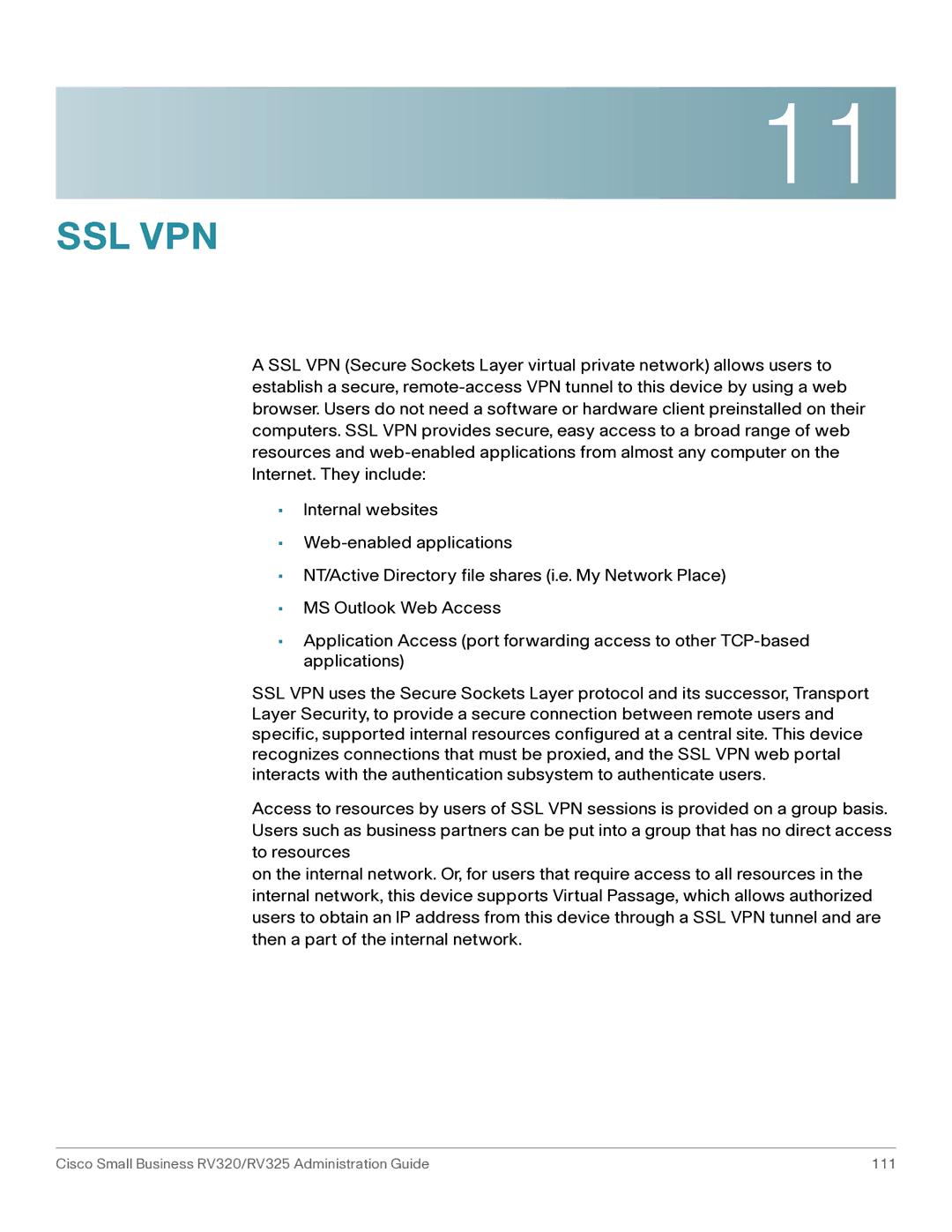
11
SSL VPN
A SSL VPN (Secure Sockets Layer virtual private network) allows users to establish a secure,
•Internal websites
•
•NT/Active Directory file shares (i.e. My Network Place)
•MS Outlook Web Access
•Application Access (port forwarding access to other
SSL VPN uses the Secure Sockets Layer protocol and its successor, Transport Layer Security, to provide a secure connection between remote users and specific, supported internal resources configured at a central site. This device recognizes connections that must be proxied, and the SSL VPN web portal interacts with the authentication subsystem to authenticate users.
Access to resources by users of SSL VPN sessions is provided on a group basis. Users such as business partners can be put into a group that has no direct access to resources
on the internal network. Or, for users that require access to all resources in the internal network, this device supports Virtual Passage, which allows authorized users to obtain an IP address from this device through a SSL VPN tunnel and are then a part of the internal network.
Cisco Small Business RV320/RV325 Administration Guide | 111 |
